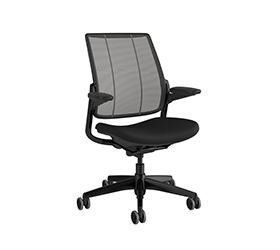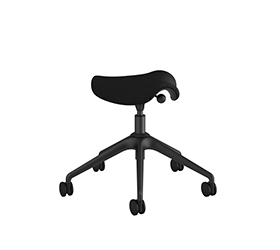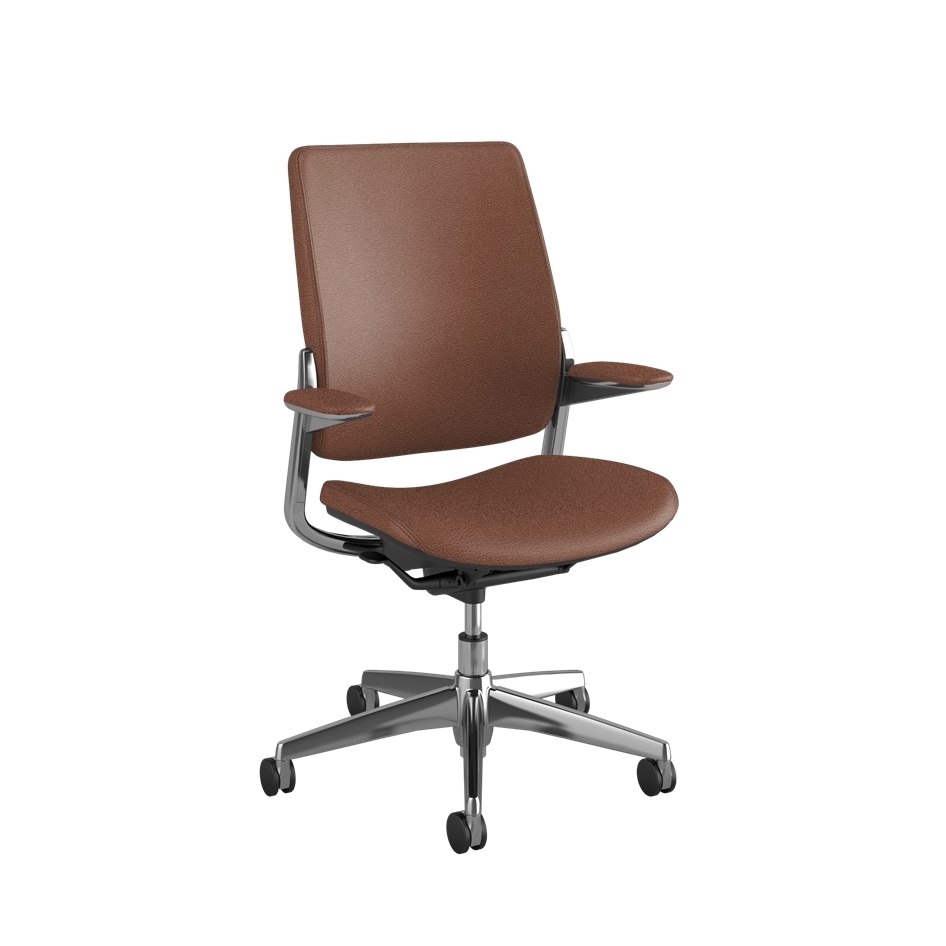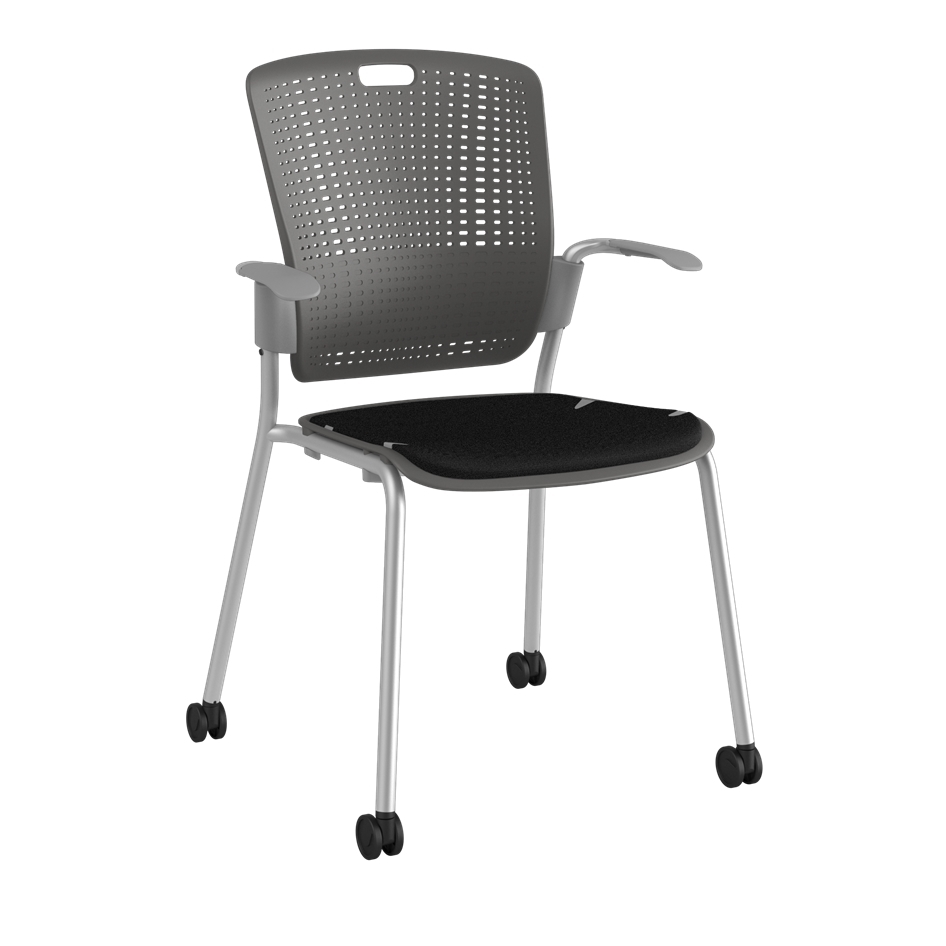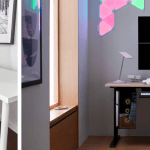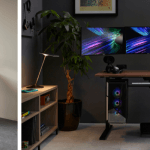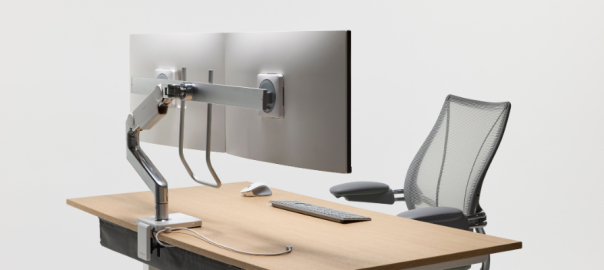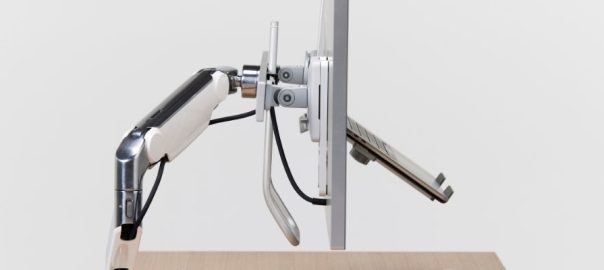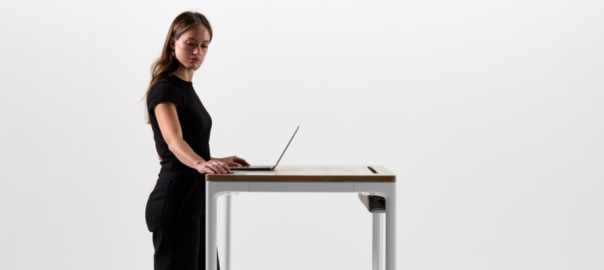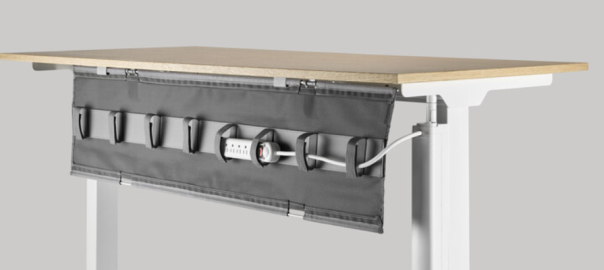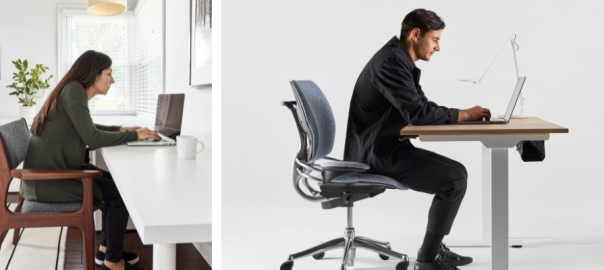This means that creating an ergonomic and minimal office desk setup isn’t just a luxury—it’s essential for your health and productivity. But don’t worry; you don’t need to spend much or become an interior designer to transform your workspace.
This article is your guide to crafting a minimal desk office setup that not only looks clean and organized but also supports your body and boosts your efficiency. We’ll walk you through practical steps to optimize your workspace, from choosing the best ergonomic chair to positioning your monitor perfectly. So, what are you waiting for? Read along!
Products You Need to Create an Ergonomic Desk Setup/Productive Workstation
Creating an ergonomic and productive workstation is essential for your comfort, health, and efficiency. By investing in the right products, you can transform your desk into a space that supports your work and well-being. Here’s a list of items you need to set up an optimal workspace:
- Adjustable Desk: An electric height adjustable desk lets you alternate between sitting and standing throughout the day. This office table setup can help lower the health risks associated with prolonged sitting. Choose a desk that easily adjusts to your preferred height, ensuring your arms remain parallel to the floor when typing.
- Ergonomic Chair: The best chair for lower back pain at home comes with adjustable height, lumbar support, and armrests. Also, the type of office chair you choose should let you sit with your feet flat on the floor and your knees at or slightly below hip level. This posture reduces strain on your back and promotes better circulation.
- Ergonomic Keyboard: An ergonomic keyboard helps keep your wrists in a natural position while typing. Position the keyboard close to your body so your elbows can maintain a 90-degree angle at your sides. 1
- Ergonomic Mouse: Choose a mouse that fits perfectly in your hand and allows your wrist to rest in a neutral position. Vertical mice or trackballs can be good options for reducing pressure on your wrist and forearm.
- Cable Management System: Keep your workstation tidy and hazard-free with cable management trays. Use cable clips, sleeves, or under-desk trays to organize cords and prevent tangling.
- Monitor Stand or Arm: Position your monitor at the right height to prevent neck strain. An ergonomic monitor stand or adjustable arm allows you to place your screen at eye level, about an arm’s length away. This desktop setup helps maintain proper posture and reduces eye fatigue.
- Footrest: If your feet don’t comfortably reach the floor when sitting, an ergonomic footrest can help. It promotes better posture and circulation by supporting your feet and legs in a comfortable position.
- Lighting: Proper lighting is important for reducing eye strain and maintaining focus. So, invest in a good desk lamp that provides adequate illumination without causing glare on your screen.
- Temperature: If you control the thermostat, aim for a temperature between 71.6 and 75.2°F (22 to 24°C) for peak focus and productivity. 2
- Noise-Cancelling Headphones: To minimize distractions in noisy environments, consider noise-canceling headphones. These headphones can help you concentrate by blocking out ambient sounds, allowing you to focus on your work.
- Indoor Plants: Add some greenery to your space with low-maintenance indoor plants. They can improve air quality, reduce stress, and add a touch of nature to your environment, potentially boosting your mood and productivity.
How to Set Up Your Desk Ergonomically?
The benefits of ergonomics in the workplace are plenty – it helps maintain good health, prevents injuries, and boosts productivity. And by making a few key adjustments to your workspace, you can build a comfortable environment that supports your body throughout the workday. Here’s how to set up your desk for optimal ergonomics:
Choose the Right Chair (Maybe an Ergo Chair)
For starters, you might wonder, ‘Regular Chair vs Ergonomic Chair: Which Is Better for Health?’ Well, the benefits of ergonomic chairs include preventing back pain, improving posture, and reducing fatigue. So, look for these features in high-quality ergonomic chairs:
- Adjustable height: This ensures you can sit with your feet on the floor and your knees slightly below hip level.
- Lumbar support: A curved backrest that follows your lower back’s natural curve helps maintain proper spine alignment.
- Proper seat depth: Aim for 3-4 fingers’ width between the seat edge and the back of your knees. This prevents pressure on the back of your thighs and allows proper blood circulation.
- Armrests: These should allow your shoulders to remain relaxed and your elbows to rest at a 90-degree angle.
When seated, your knees should be level with or slightly below your hips, and your feet should rest flat on the floor. Some chairs offer a slight recline option (100-110 degrees), which some find comfortable. If possible, test a chair for at least 30 minutes before purchasing to ensure comfort and avoid ergonomic hazards during typical work tasks.
Adjust Your Desk Height
Your desk height significantly affects your posture and comfort throughout the day. Proper desk height helps prevent strain on your neck, shoulders, and arms. Aim for:
- Forearms parallel to the ground while typing: This position reduces the pressure on your wrists and shoulders.
- Option to alternate between sitting and standing: If possible, a sit-stand desk can provide flexibility and promote movement throughout the day.
If your laptop desk setup isn’t adjustable, consider using a keyboard tray to lower your typing surface or desk risers to achieve the proper height. You can also use online tools to assess the ideal desk height based on your body measurements.
Position Your Monitor Correctly
Proper monitor placement is crucial for reducing eye strain and preventing neck pain. Follow these detailed guidelines during an office desk setup:
- Place the monitor 20-40 inches away (about arm’s length): This distance allows you to read comfortably without straining your eyes or leaning forward. 3
- Align the top of your screen at or slightly below eye level: This prevents you from tilting your head back, which can cause neck strain.
- Tilt the monitor no more than 10-20 degrees: Excessive tilt can make it difficult to read screen contents.
- Position it perpendicular to windows to avoid glare: This reduces eye strain and prevents you from sitting with awkward postures to see the screen clearly.
For those using multiple monitors, position the primary screen directly in front of you and the secondary screen to the side. Remember to take regular eye breaks using the 20-20-20 rule – every 20 minutes, focus on something that is 20 feet away for 20 seconds to lower eye fatigue. 4
Optimise Keyboard and Mouse Placement
Correct positioning of your input devices is crucial for preventing repetitive strain injuries in your wrists, arms, and shoulders:
- Keep the keyboard close enough to maintain 90-degree elbow angles: This reduces reach and prevents shoulder fatigue.
- Ensure your wrists remain flat or slightly tilted downward: Avoid angling your wrists upward, which can lead to strain over time.
- Position the mouse close to the keyboard to avoid overreaching: This prevents unnecessary stretching and reduces shoulder strain.
Consider using an ergonomic under-desk keyboard tray with a split design or slight tilt to keep your wrists in a more natural position. For laptop users, an external keyboard and mouse can greatly improve ergonomics by allowing for more flexible positioning.
Maintain Good Posture
Regardless of your setup, maintaining proper posture is essential for preventing pain and fatigue:
- Keep your shoulders rolled back: This helps maintain the natural curve of your spine and stops hunching.
- Sit straight and engage your core: This supports your back and improves overall posture.
- Ensure your hips are a little higher than your knees: This position reduces pressure on your lower back.
Also, remember to take frequent breaks to stretch and move around. Do you have a bad memory or get too involved in your work to remember to take breaks? Set reminders or use a timer to ensure you’re not sitting for extended periods. During these short breaks, stand up, walk around, or do some simple stretches every 30-60 minutes. This not only benefits your body but can also boost your overall productivity by refreshing your mind.
How to Set up a Productive Workstation?
Your workspace is more than just a place to get things done—it’s an ecosystem that can either fuel your productivity or hinder it. While many focus solely on ergonomic furniture, the environmental factors of your workstation play an equally crucial role in your daily output and overall well-being. Let’s explore how to transform your workspace into a productivity powerhouse by fine-tuning often-overlooked elements.
Use the Power of Natural Light
Lighting isn’t just about being able to see your work—it’s a powerful tool that can influence your mood, energy levels, and cognitive function. Natural light, in particular, offers numerous benefits:
- Regulates circadian rhythms: Exposure to natural light during work hours helps maintain your body’s internal clock, improving sleep quality and daytime alertness.
- Boosts mood and focus: Sunlight triggers the release of serotonin, a hormone that boosts mood and concentration.
- Reduces eye strain: Natural light provides even illumination, reducing the contrast between your screen and surroundings.
How to do this?
- Position your work desk setup near a window, but avoid sitting directly in front of or with your back to it to prevent glare.
- Use sheer curtains to diffuse harsh direct sunlight.
- If natural light is limited, invest in a full-spectrum light therapy lamp that mimics daylight.
- Take short breaks outdoors to soak up sunlight, especially during winter months.
Incorporate Plants into Your Space
Bringing a touch of nature into your workplace desk setup does more than just beautify the area. Plants can significantly impact your work environment and productivity:
- Improve air quality: Plants naturally filter air, removing toxins and increasing oxygen levels.
- Reduce stress: Interacting with plants, even visually, can lower stress levels and blood pressure.
- Enhance focus: Studies show that the presence of plants can increase attention span and concentration.
How to do this?
- Choose low-maintenance plants like peace lilies, snake plants, or succulents if you’re new to plant care.
- Place small plants on your desk or larger floor plants nearby.
- Consider air-purifying plants like spider plants or rubber plants for added benefits.
- Use plants as natural dividers in open office spaces to create a sense of privacy.
Optimize Your Sound Environment
The right auditory environment can make or break your focus. Here’s how to create a soundscape that enhances productivity:
- Mask distracting noises: Use white noise, nature sounds, or instrumental music to cover up disruptive background sounds.
- Enhance focus: Certain types of music, like classical or ambient, can improve concentration and cognitive performance.
- Create a personal audio bubble: Noise-cancelling headphones can help you maintain focus in noisy environments.
How to do this?
- Experiment with different types of background sounds to find what works best for you.
- If possible, designate quiet zones in shared workspaces for tasks requiring high concentration.
- Consider using a white noise machine if you prefer not to wear headphones.
Find Your Ideal Temperature
Temperature comfort is highly individual, but it significantly impacts your ability to focus and work efficiently:
- Cognitive function: Studies suggest that cognitive performance peaks at temperatures around 71.6°F (22°C).
- Energy levels: Temperatures that are too warm can lead to sluggishness, while too cold can be distracting.
- Gender differences: Research indicates that women are more sensitive to temperature. This is likely to affect their productivity. 5
How to do this?
- If you have control over the thermostat, experiment with different temperatures to find your sweet spot.
- Keep a light sweater or blanket nearby for quick adjustments.
- Use a small personal fan or heater to fine-tune your immediate environment.
- Stay hydrated, as proper hydration helps your body regulate temperature more effectively.
Personalize Your Space
A workspace that reflects your personality can boost motivation and make long hours more enjoyable:
- Inspiration Boost: Surrounding yourself with meaningful objects can motivate challenging tasks.
- Comfort and familiarity: Personal touches create a sense of ownership and comfort in your work area.
- Reduced stress: A personalized space can feel more relaxing, helping to mitigate work-related stress.
How to do this?
- Display photos of loved ones or inspiring landscapes.
- Add small plants or a terrarium for a touch of nature.
- Use a favorite mug or water bottle.
- Incorporate artwork or motivational quotes that resonate with you.
- Organize your tools and supplies in a way that feels intuitive and aesthetically pleasing to you.
Conclusion
By implementing these detailed ergonomic tips, you’ll create a workspace that supports your health and enhances your work performance. Remember to make adjustments as needed and listen to your body – everyone’s ideal setup may vary slightly based on individual body types and work habits.


